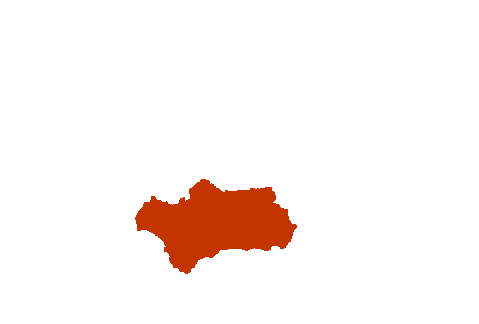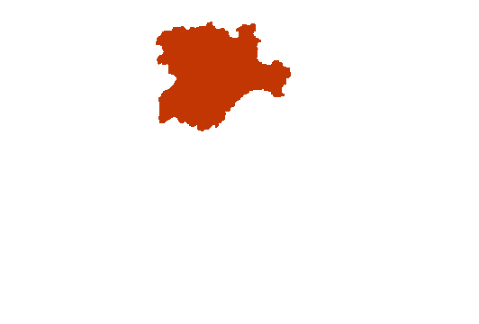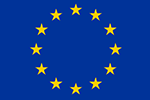Protection of trade marks and trade names
Content
What are trade marks and trade names?
- Trade mark. A distinctive sign identifying a company’s products or services on the market and differentiating them from those of its competitors.
- Trade name. Another kind of distinctive sign identifying a company in the course of its trade activity and helping to differentiate it from other companies engaged in identical or similar activities.
When applying for a trade mark or a trade name, you must choose one or more ‘classes’ based on the Nice Classification![]() , which establishes 34 different classes for products and 11 different classes for the protection of services.
, which establishes 34 different classes for products and 11 different classes for the protection of services.
Rights gained by registering trade marks or trade names
A trade mark or trade name is an industrial property right that entitles the holder to exclusive use of the protected sign for the goods and/or services for which it has been registered. At the same time, this right to exclusive use is accompanied by the right to prevent anyone not having the proprietor’s consent from using a sign that is likely to cause confusion due to being used to market goods or services similar or identical to those protected by the trade mark.
Types of trade marks
Trade marks may be:
- word marks: these consist exclusively of words, letters or numbers and standard typographic characters, without any graphic or layout features or colour;
- figurative marks: these consist of words, letters or numbers with non-standard characters, stylisation or layout, with or without graphical or colour elements, or formed exclusively of graphical elements;
- shape marks: these consist of a three-dimensional shape;
- position marks: these consist of the specific way in which the trade mark is positioned or affixed on the product;
- pattern marks: these consist exclusively of a set of elements that are repeated regularly;
- colour marks: exclusively composed of either a single colour or a combination of colours, without contours;
- sound marks: these consist solely of a sound or a combination of sounds;
- motion marks: these consist of a movement or a change in the position of the elements of a mark;
- multimedia marks: these consist of a combination of images and sound;
- hologram marks: these consist of elements with holographic characteristics;
- others: trade marks that are not covered by any of the other types of trade marks.
Together with the trademark itself or individual trademark, the Law regulates the collective mark and the guarantee mark. A collective mark serves to distinguish, on the market, the goods or services of members of an association of manufacturers, traders or service providers from the goods or services of other market operators.
The guarantee mark is one that guarantees or certifies that the products or services to which they are applied meet common requirements, especially with regard to their quality, components, geographical origin, technical conditions, way of making the product, etc. This mark may not be used by the proprietor, but only by third parties which the proprietor has authorised after checking and assessing that the third party’s goods or services meet the requirements guaranteed or certified by that mark.
Both the collective mark and the guarantee mark require that they be accompanied by the application for registration of the corresponding regulation of use in order to be registered. In the case of a guarantee mark, the regulations for use must be accompanied by a favourable report from the competent administrative body according to the nature of the goods or services to which the guarantee mark refers.
Requirements for obtaining a trade mark or trade name
The sign to be registered must be:
- lawful, i.e. it is not covered by any of the prohibitions laid down by the law.
- The sign applied for must not conflict with other earlier rights, whether by way of a trade mark or other exclusive right, such as the right to a name, intellectual property right, etc.
Information on the interpretation of the legal requirements for registering trade marks can be found on the Spanish Patents and Trade Mark Office (OEPM) website![]() – Guía de examen de prohibiciones de registro [ Guide examining the prohibitions relating to registration
– Guía de examen de prohibiciones de registro [ Guide examining the prohibitions relating to registration![]() ].
].
How much does it cost and where can a trade mark or trade name be registered?
The cost of a trade mark or trade name depends on the number of ‘classes’ that are applied for; the more classes applied for, the higher the fees to be paid. In Spain, the official application fee for a trade mark or trade name is in the region of EUR 150 for the first class. The fees, which are reviewed every year, can be consulted by following this link.![]()
It is possible to register the trade mark or trade name:
- On the website
 , with a 15 % discount;
, with a 15 % discount; - At the regional industrial property information
 centres;
centres; - At post offices;
- In person at the Spanish Patents and Trade Mark Office.

Paper filing of the application is only possible if you are not obliged to interact with the Public Administration through electronic means (Article 14(2) of Law 39/2015 of 1 October on the Common Administrative Procedure of Public Administrations).
Before submitting the trade mark application, you should search for possible earlier registrations in the OEPM![]() ’s free databases
’s free databases![]() , to find out whether other trade marks or trade names that are the same or very similar already exist, which could prevent the trade mark from being awarded.
, to find out whether other trade marks or trade names that are the same or very similar already exist, which could prevent the trade mark from being awarded.
CEO, the public tool for consulting Spanish Patents and Trademarks Office (SPTO) records may also be used for carrying out searches based on names, applicants, classes applied for and the state of validity of trade marks or trade names that are already in the database: Consult SPTO records on CEO.![]()
Where is the protection of a trade mark or trade name registered in Spain valid?
A Spanish trade mark or trade name grants protection to its proprietor in Spanish territory.
National trade marks can extend protection internationally in two ways.
- European Union (EU) trade mark
 , with protection in EU Member States. A national trade mark of a Member State may prevent the EU trade mark from being awarded.
, with protection in EU Member States. A national trade mark of a Member State may prevent the EU trade mark from being awarded. - An international trade mark gives the trade mark protection in the more than 120 countries that are members of the Madrid System
 . To apply for an international trade mark, you must have previously applied for or registered a national trade mark or an EU trade mark.
. To apply for an international trade mark, you must have previously applied for or registered a national trade mark or an EU trade mark.
For how long does the protection of a trade mark or trade name last?
Trade marks or trade names are awarded in Spain for a period of 10 years from the application date and may be extended indefinitely provided that they are renewed.
The trade mark or trade name ceases to be valid if the renewal payment is not made.
Information for each Autonomous Community








Andalucía Aragón Asturias, Principado de Balears, Illes Canarias Cantabria Castilla y León Castilla-La Mancha Cataluña Ciudad de Ceuta Ciudad de Melilla Comunitat Valenciana Extremadura Galicia Madrid, Comunidad de Murcia, Región de Navarra, Comunidad Foral de País Vasco Rioja, La
Legal and/or technical references
-
Standards relating to trade marks and trade names.

-
Fees for trade marks and trade names.

-
Information leaflets: About trade marks and trade names

-
Information leaflet: Basic questions about trade marks and trade names

-
Information leaflet: What is a trade mark?

-
Information leaflet: Trade marks and SMEs

-
Information leaflet: Cómo Registrar Marcas y Nombres Comerciales en 8 Pasos [‘How to register trade marks and trade names in 8 steps’].

-
Information leaflet: El Secreto está en la Marca [‘Making a mark’]

-
Trade mark and trade name databases.

-
FAQs











